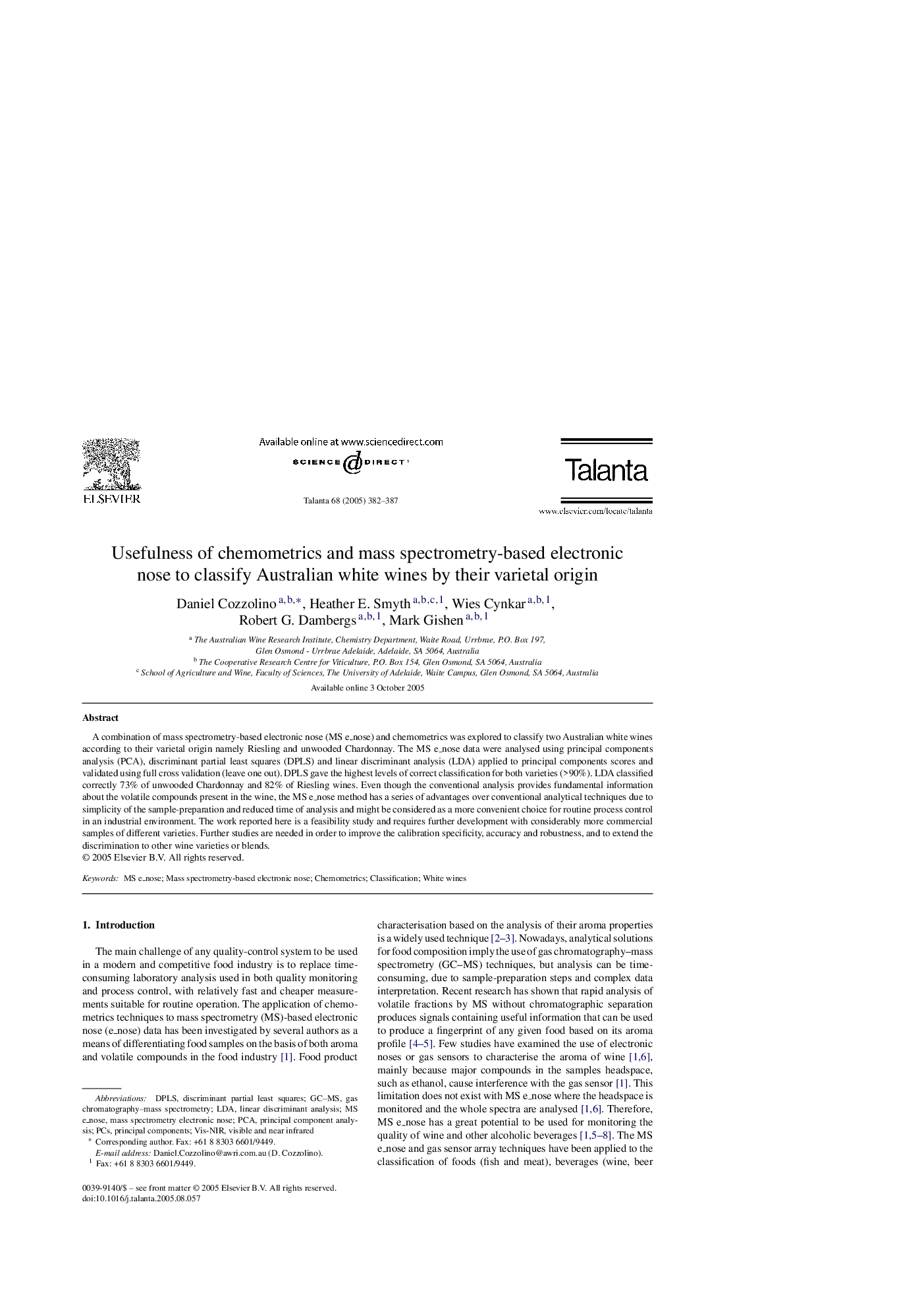| کد مقاله | کد نشریه | سال انتشار | مقاله انگلیسی | نسخه تمام متن |
|---|---|---|---|---|
| 10561021 | 969759 | 2005 | 6 صفحه PDF | دانلود رایگان |
عنوان انگلیسی مقاله ISI
Usefulness of chemometrics and mass spectrometry-based electronic nose to classify Australian white wines by their varietal origin
دانلود مقاله + سفارش ترجمه
دانلود مقاله ISI انگلیسی
رایگان برای ایرانیان
کلمات کلیدی
موضوعات مرتبط
مهندسی و علوم پایه
شیمی
شیمی آنالیزی یا شیمی تجزیه
پیش نمایش صفحه اول مقاله

چکیده انگلیسی
A combination of mass spectrometry-based electronic nose (MS e_nose) and chemometrics was explored to classify two Australian white wines according to their varietal origin namely Riesling and unwooded Chardonnay. The MS e_nose data were analysed using principal components analysis (PCA), discriminant partial least squares (DPLS) and linear discriminant analysis (LDA) applied to principal components scores and validated using full cross validation (leave one out). DPLS gave the highest levels of correct classification for both varieties (>90%). LDA classified correctly 73% of unwooded Chardonnay and 82% of Riesling wines. Even though the conventional analysis provides fundamental information about the volatile compounds present in the wine, the MS e_nose method has a series of advantages over conventional analytical techniques due to simplicity of the sample-preparation and reduced time of analysis and might be considered as a more convenient choice for routine process control in an industrial environment. The work reported here is a feasibility study and requires further development with considerably more commercial samples of different varieties. Further studies are needed in order to improve the calibration specificity, accuracy and robustness, and to extend the discrimination to other wine varieties or blends.
ناشر
Database: Elsevier - ScienceDirect (ساینس دایرکت)
Journal: Talanta - Volume 68, Issue 2, 15 December 2005, Pages 382-387
Journal: Talanta - Volume 68, Issue 2, 15 December 2005, Pages 382-387
نویسندگان
Daniel Cozzolino, Heather E. Smyth, Wies Cynkar, Robert G. Dambergs, Mark Gishen,